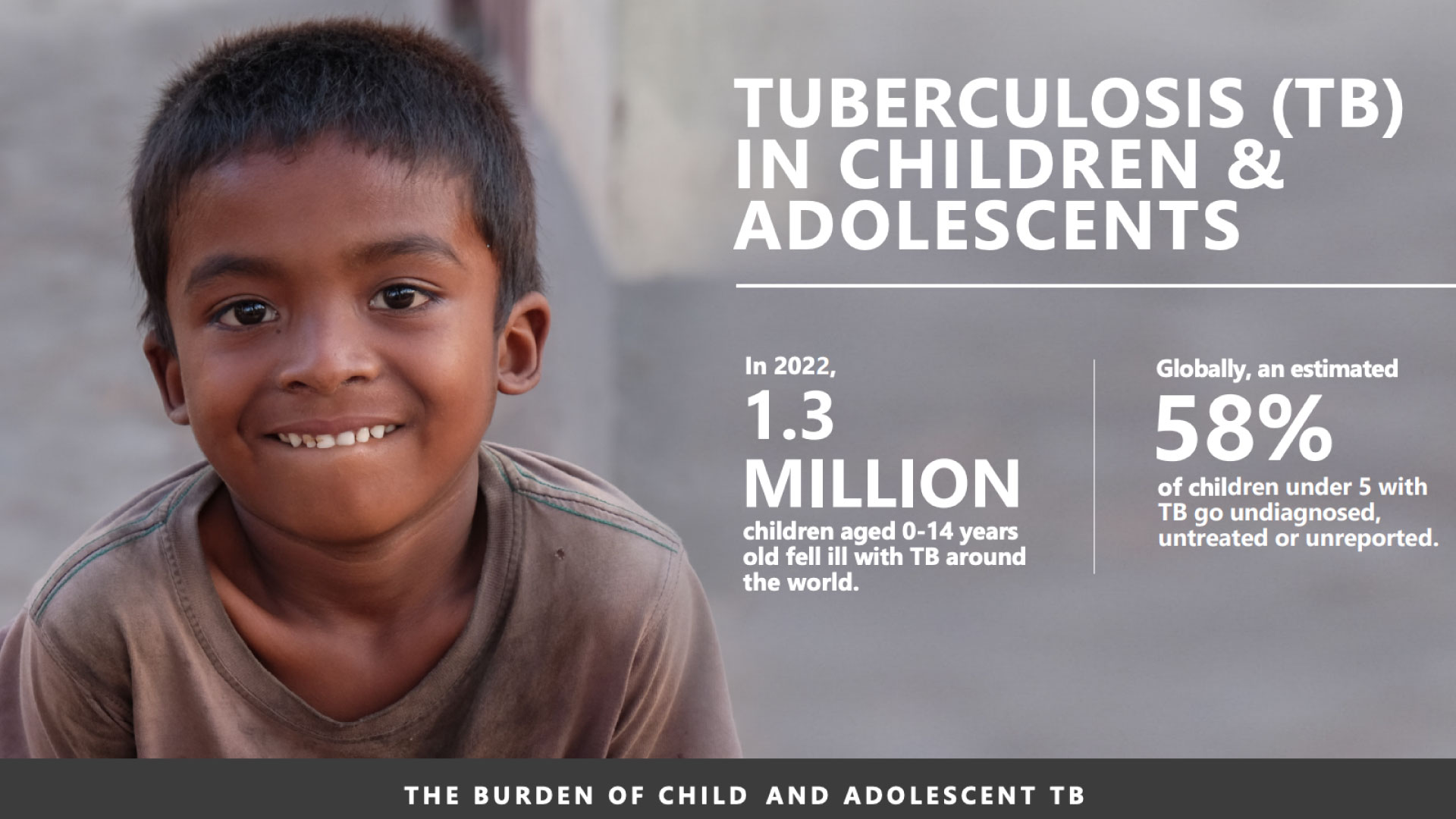At a glance
- What you need to know about child and adolescent TB, including the latest global statistics.
- The fact sheet also includes details on CDC's role in preventing, diagnosing, treating, and sustaining the response.
508 text
Tuberculosis (TB) in Children and Adolescents
- In 2023, 1.25 million children aged 0-14 years old fell ill with TB around the world.
- Globally, an estimated 52% of children under 5 with TB go undiagnosed, untreated or unreported.
The burden of child and adolescent TB in 2023:
191K
73%*
96%*
Challenges in addressing child and adolescent TB
Difficulties in diagnosis
TB in children is difficult to diagnose with traditional diagnostic tools, but consistent use of child friendly specimens and increasing access to chest x-rays can improve case finding among children.
TB preventive treatment remains low
Provision of TB preventative treatment (TPT) to children in contact with someone with TB remains low, with only 42% of those eligible receiving TPT every year.
HIV-associated TB
An estimated 33% of deaths among children living with HIV are due to TB.
CDC's role in the fight against child and adolescent TB
Diagnose
Working with Ministries of Health (MOHs) to promote use of child friendly approaches and diagnostics to diagnose TB in children. In Eswatini, Lesotho, Malawi, Tanzania, and Uganda, CDC is working with MOHs and Baylor College of Medicine to evaluate the latest screening and diagnostic methods to determine the most effective and efficient ways to diagnose TB among children.
Treat
Linking every child screened for TB through PEPFAR platforms to diagnostic evaluation and treatment for TB. In 2024, 95% of all children and adolescents with TB at CDC-supported facilities had a known HIV status3.
Prevent
Scaling-up TB preventive treatment to all eligible children, including household contacts of people with TB and children living with HIV. Since 2017, CDC accounts for over 60% of PEPFAR TPT initiations for children living with HIV.3
Sustain
Providing leadership and technical assistance to identify and address gaps that hinder childhood TB elimination.
CDC and the International Union Against TB and Lung Disease have established a Centre of Excellence, providing a global, virtual platform with twelve ministries of health to provide a community of learning and practice for child and adolescent TB in countries hardest hit by the epidemic.
Significant progress has been made in response to child and adolescent TB, but there is still much left to do.
Recent progress: Responding to child and adolescent TB
- Less invasive diagnostic methods discovered, simplifying the diagnosis of TB in children.
- Shorter treatment regimens for drug-susceptible TB among children are obtainable, reducing burden on children and their families can improve treatment outcomes for children.
- Nearly all TPT and TB treatment regimens are now available in dispersible, pediatric formulations.
- A comprehensive roadmap for ending tb in children and adolescents—supported by CDC and updated in 2023—identifies key actions to close remaining gaps.
There is more work to be done to end childhood TB:
- Slow adoption and uptake of child-friendly diagnostic tools hinders diagnosis of TB in children.
- Shorter treatment regimens for children require capacity to differentiate severe TB disease from uncomplicated, non-severe disease, slowing uptake of access to this preferred treatment.
- Expanding access to TPT for all children living with HIV and household contacts of people with TB is critical to close the prevention gap.
To learn more, visit: www.cdc.gov/globalhivtb
- World Health Organization Global TB Report 2024
- 2023 WHO roadmap towards ending TB in children and adolescents
- Annual Performance Results from the U.S. President's Emergency Plan for AIDS Relief (PEPFAR)

